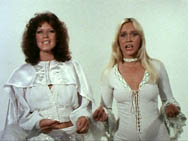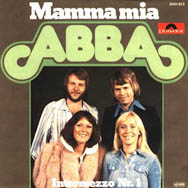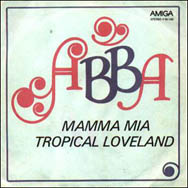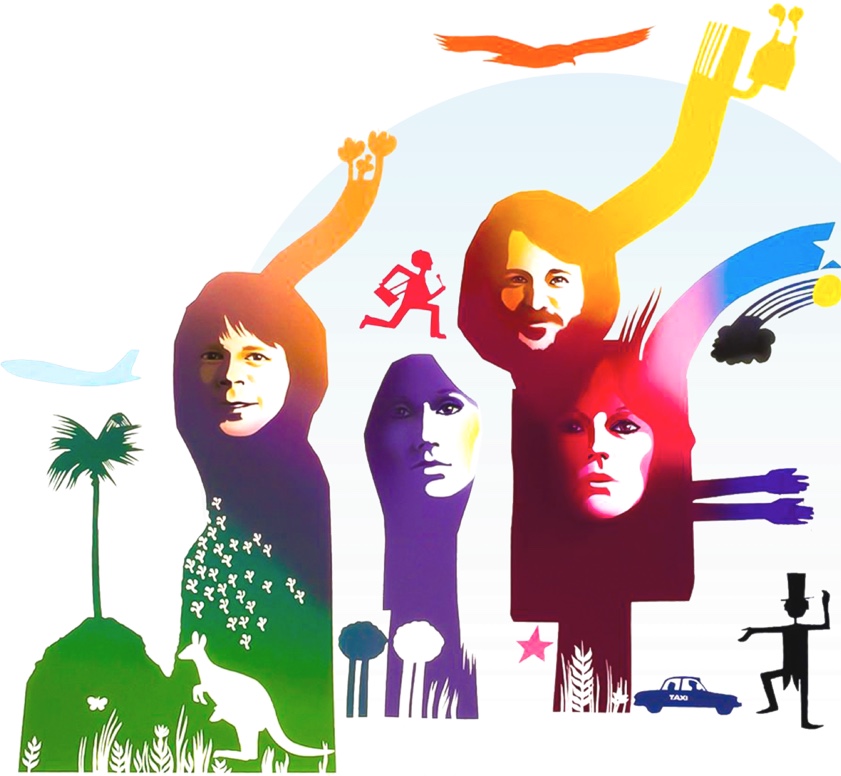In Focus: Mamma Mia – The Song That Saved ABBA
Today, when we hear the title Mamma Mia, we think of the musical and the hit movie that was one of the box office smashes of 2008. But the song that gave the show its name was also the single that established ABBA as an international hit act.
Catchy title
 In the summer of 1975, just a few months after ABBA released their third album (simply entitled ABBA), the group were a bit uncertain as to the future of their international career. Things were looking very good in most of Europe, where both their singles and their albums were lapped-up eagerly, but in Great Britain – the home of modern pop music, as far as ABBA were concerned – the story was somewhat less rosy. Certainly, the group had enjoyed a number one hit with ‘Waterloo’ a year earlier, but since then their singles had just kept flopping, and their albums were routinely dismissed. Because ABBA had achieved their breakthrough via the Eurovision Song Contest, they were automatically regarded as one-hit wonders. They simply weren’t supposed to have any more hits in Great Britain. But things were soon to turn around for the band, thanks to events on the other side of the planet – and thanks to one of the strongest tracks on their latest album
In the summer of 1975, just a few months after ABBA released their third album (simply entitled ABBA), the group were a bit uncertain as to the future of their international career. Things were looking very good in most of Europe, where both their singles and their albums were lapped-up eagerly, but in Great Britain – the home of modern pop music, as far as ABBA were concerned – the story was somewhat less rosy. Certainly, the group had enjoyed a number one hit with ‘Waterloo’ a year earlier, but since then their singles had just kept flopping, and their albums were routinely dismissed. Because ABBA had achieved their breakthrough via the Eurovision Song Contest, they were automatically regarded as one-hit wonders. They simply weren’t supposed to have any more hits in Great Britain. But things were soon to turn around for the band, thanks to events on the other side of the planet – and thanks to one of the strongest tracks on their latest album
 ‘Mamma Mia’ was the very last track to be recorded for the ABBA album, in March 1975. Today, not much is remembered about the creation of the song, except that Björn recalls that he and Benny wrote it in the library of Björn and Agnetha’s then home in the Stockholm suburb of Lidingö. Although Björn was ABBA’s main lyricist at this time, their manager, Stig Anderson, still contributed catchy, “international” song titles – ‘Mamma Mia’ was just the latest in a long row. “That turned out to be another distinctive and memorable title, and one that maybe a native English writer would have thought was too European – and very uncool”, reflects Björn in the book Mamma Mia! How Can I Resist You? “The saying ‘mamma mia’ is used very, very commonly in Swedish and is just as well known a phrase as it would be in English.”
‘Mamma Mia’ was the very last track to be recorded for the ABBA album, in March 1975. Today, not much is remembered about the creation of the song, except that Björn recalls that he and Benny wrote it in the library of Björn and Agnetha’s then home in the Stockholm suburb of Lidingö. Although Björn was ABBA’s main lyricist at this time, their manager, Stig Anderson, still contributed catchy, “international” song titles – ‘Mamma Mia’ was just the latest in a long row. “That turned out to be another distinctive and memorable title, and one that maybe a native English writer would have thought was too European – and very uncool”, reflects Björn in the book Mamma Mia! How Can I Resist You? “The saying ‘mamma mia’ is used very, very commonly in Swedish and is just as well known a phrase as it would be in English.”
Marimba Mia

For Benny, ‘Mamma Mia’ is a good example of how ABBA would explore the possibilities of the recording studio, with the actual tune of the song being only one of the many things happening on the recording. ”‘Mamma Mia’ is one of those typical ABBA songs which really don’t work that well when you play them with just a piano and a guitar,” he once explained. ”It’s much too dependent on all the little whims and harmony parts and riffs and whatnot, which we somehow managed to organise, and which are what ABBA were all about.” One of those “whims”, the inclination to make the recording just a little more interesting, led to the overdub of a marimba, the tick-tocking sound of which is quite audible at the start of the song. “That came about because the marimba was sitting there in this little corner of the Metronome Studio. So when the song was going, and everybody was playing, we thought, ‘Well, that’s OK, but it’s not really a record is it? It’s like four or five guys just trying to play something together.’ … I started playing on [the marimba]. I just wanted to see what it sounded like. … And it changed the course of the song … it made for a really catchy start[.]”
Arresting visuals
It was clear from the beginning that ABBA and their record company, Polar Music, really believed in ‘Mamma Mia’. The song was one of four songs for which they filmed promo clips at the end of April 1975, the other three being ‘SOS’, ‘I Do, I Do, I Do, I Do, I Do’ and ‘Bang-A-Boomerang’. However, it was far from certain that ‘Mamma Mia’, perhaps the very catchiest song on the album, would be released as a single; to ABBA’s way of thinking, the clips were made to promote the album as much as the individual tracks. The first single to be released from the sessions had been ‘So Long’, in November 1974. Then, in conjunction with the release of the ABBA album, ‘I Do, I Do, I Do, I Do, I Do’ was issued as the second single. And finally, in June 1975, ‘SOS’ became the third single. That’s where ABBA and their management thought it should stop – no more singles that would detract attention from the album.
However, what they hadn’t counted on were events taking place on the other side of the planet: in Australia, to be exact. Starting with ‘I Do, I Do, I Do, I Do, I Do’, the Australian population had really taken a shine to the songs of ABBA. The four clips were repeatedly shown on television, with ‘Mamma Mia’ being especially popular. The combination of catchy pop music and arresting visuals caught the attention of the audience, with the tick-tock marimba opening of the song effectively pulling them in. Agnetha and Frida’s energetic vocal performance was matched by their appearance: a pair of dolls, two slightly surreal beauties in outlandish costumes.
The noise from down under



To learn more about the Mamma Mia! movie, please visit www.mammamiamovie.com
